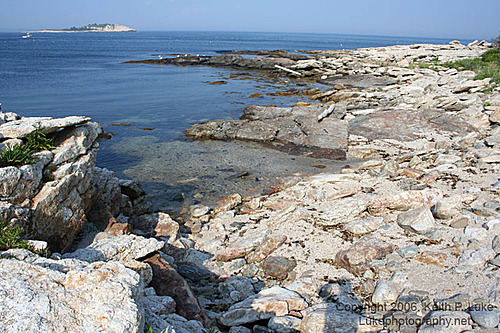The state of Maine is attempting to designate more than a dozen islands as new wilderness areas, part of a growing trend of protecting these rare habitats.
According to Mike Michaud, a Maine congressional representative, his state hasn’t been doing enough to protect its rare island habitats – and he intends to change that. On September 21st, he introduced the Maine Coastal Wilderness Act of 2011, which would give 13 unique islands on the state’s coast, totaling 3,125 acres, added protected as “wilderness” areas. This would allow the picturesque area, currently known as the Maine Coastal Islands National Wildlife Refuge, to enjoy additional conservation efforts, stronger protection against potential development, and hopefully, more federal funding.
This doesn’t mean that the thousands of tourists who flock to Maine’s shores would be barred from visiting the islands, however. All 13 islands would be open to limited public use; as wilderness lands, even hunting and fishing are allowed, as well as camping, boating, and hiking. According to the co-sponsor of the bill, Maine congresswoman Chellie Pingree, there are some strong economic reasons for supporting more protection for her state’s coastal islands. During a discussion in Congress, she stated that the bill’s benefits were far-reaching, and included local businesses.
“Wildlife watching and ecotourism bring millions of dollars into Maine’s economy every year. Not only for the guides and boats that bring people to these beautiful places, but for hotels, restaurants, and stores that also serve them. This classification will be an incredible asset to promoting the world-class resources we have here in Maine and building on this sustainable piece of our economy. With a new Seabird Islands Visitors Center in Rockland, it couldn’t come at a better time either,” she said.
Based on local media reports, the local community’s opinion of the bill has been largely positive, although some detractors fear that further environmental restrictions will have an adverse economic affect, particularly on jobs, even though the use of the islands was already severely curtailed under the current protection. Businessman Michael Thompson, however, is not among them; the chairman of the Friends of Maine Seabird Islands, he voiced his support for the bill.
“These islands are gems. There was overwhelming public support for protecting them during comments on the management plan. This legislation ensures that the islands will pass, unspoiled, to future generations of Maine citizens and tourists for walking, wildlife viewing, photography, picnicking, camping and boating,” said Thompson.
The 13 islands, spanning two-thirds of Maine’s craggy coastline from the far north near Machias to just south of the town of Rockland, include scenic refuges like Outer Heron and Outer White islands near Boothbay, Addison’s Inner Sand Island, Halifax Island by the town of Jonesport, and a six-island group called the Cross Island Complex. All are valuable habitats for Maine’s native flora and fauna, including acting as way stations for migrating seabirds and other water fowl. And with this new legislation, the islands will remain beautiful for generations to come– and Maine’s tourism may just get a much-needed boost.
Read the original article here: Bangor Daily News




